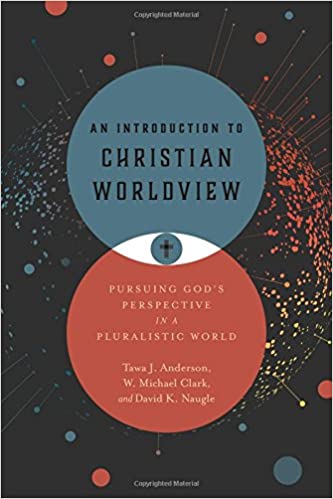A Book Review from Books At a Glance
By Bennett W. Rogers
A few years ago, I found myself teaching a course on the Christian worldview. I was unhappy with the curriculum I inherited, so I started to build my own from scratch. I started with the classics – The God Who is There (Shaeffer), The Universe Next Door (Sire), Total Truth (Pearcy) – and began adding to the course (and the bibliography) each year. This year I read An Introduction to Christian Worldview: Pursuing God’s Perspective in a Pluralistic World by Anderson, Clark, and Naugle. Simply put, it is the best introduction to the Christian worldview available. I know that is a rather bold claim – I chose my words carefully. I have yet to find a single volume that combines comprehensiveness and practical usefulness so well.
The book is divided into three parts. In Part I, Tawa Anderson introduces the theoretical side of worldview thinking. He explores the concept of worldview itself (ch.1) considers its importance and impact (ch. 2), and outlines the process of worldview analysis (ch.3). I found chapter three to be the most helpful in the entire volume.
Most worldview books engage in some form of worldview analysis, and some do it really well (see the works Sire, Anderson, Pearcy). This work is no exception. In Part III of the work, Michael Clark does an excellent job comparing the Christian worldview to several philosophical and religious alternatives. But Anderson does more than offer worldview analysis – he provides readers with tools to do their own analysis. Again, he is not unique in this respect; Pearcy does so as well in Total Truth. His approach is simply more robust, more systematic, and more user friendly. He offers three criteria for worldview analysis:
- Internal consistency: logical coherence.
- External consistency: evidential correspondence.
- Existential consistency: pragmatic satisfaction.
Most authors who engage in worldview analysis uses these tools, but they don’t explain them to the reader or teach him/her how to apply them. In other words, Anderson makes explicit what is often implicit in other works. This is what makes An Introduction to Christian Worldview so practically useful for both teacher and student.
In Part II, David Naugle explains (chs.4-5) and tests (ch.6) the Christian worldview, using the criteria mentioned above. Naugle presents the Christian worldview from two different angles. In chapter 4 he outlines the narrative core of the Christian story – creation, fall, redemption, and glorification. In chapter 5 he approaches the Christian worldview through the lens of four critical worldview questions:
- What is our nature?
- What is our world?
- What is our problem?
- What is our end?
Naugle’s method is undoubtedly his greatest contribution to the work. There are other outstanding expositions of the Bible’s storyline (see Ryken, What is the Christian Worldview?) and different sets of worldview questions (see Sire, The Universe Next Door), but you couldn’t find both done so well in one volume until now.
As previously mentioned, Michael Clark engages in comparative worldview analysis in Part III. He compares the Christian worldview to several philosophical (deism, naturalism, and postmodernity) and religious (Hinduism and Islam) alternatives and applies the three worldview tests to each. His analysis is interesting in its own right, but more importantly, it illustrates the book’s methodology wonderfully well. Following the example of Clark, readers should be able to do their own worldview analysis and critique.
There are other features to the book that deserve mention. The chapters are incredibly user friendly. They are outlined, which makes the book easy to teach. The graphics, graphs, “Contemporary Cultural Worldview Meditations,” and “Biblical Worldview Insights,” illustrate important points, add variety to the text, and help readers see the relevance of the material. The authors have added reflection questions at critical points in the chapters to drive home the salient points of each reading. Finally, at the end of each chapter there is a checklist, which highlights the educational objectives of each chapter, a chapter-specific glossary of terms, suggestions for potential term paper topics, and a core bibliography.
A parting word to pastors and Christian workers, especially youth and college ministers: if you have never taught a Sunday school class or led a small group study through a study of the Christian worldview, let me encourage you to do so soon. I trust that I don’t need to convince you of the importance of having a biblical worldview. In my experience, people are hungry for it. They want to see the big picture. They want to make sense of the world. They believe that “All truth is God’s Truth,” and they are eager for someone to help them put it all together. Credo ut intelligam. This book can help you do that. In fact, this book may be able to help you do that better than any other single volume on the market. It does more than explain – it trains. If you are planning on teaching on the Christian worldview – or apologetics or world religions, for that matter – this is the best introduction currently available.
Bennett W. Rogers
